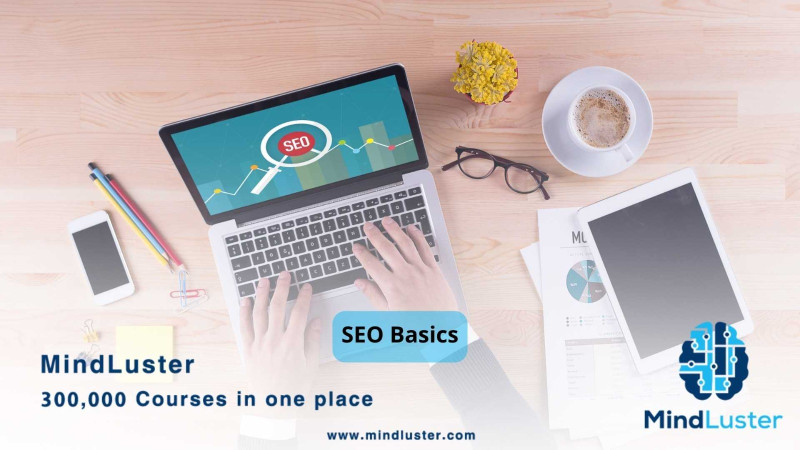Every website dreams of being the first result in Google search, and to achieve that, you have to do a lot of search engine optimization work. From keyword research to on-page optimization, having a solid SEO foundation has to be your sword and shield if you are willing to work as a search engine optimization specialist or even if you are a website owner who wants to sit on top forever.
In this blog, we will take you on a quick yet comprehensive tour of the most important SEO basics to climb the Google ladder easily and efficiently. Ready to get your site noticed? Let's jump in!
SEO Basics Overview
As mentioned, SEO Basics is a complex set of strategies and techniques. Understanding each component—keyword research, on-page SEO optimization, and backlinks—will equip you with the tools needed to enhance your website's visibility and ranking on search engines effectively. But before diving directly into the technical instructions, let’s first understand SEO and why it is important to your website.
What is SEO?
SEO, or Search Engine Optimization, enhances a website's visibility and ranking on search engine results pages (SERPs). The previous is the book answer, but to be more precise, as Google says, SEO gives your website’s users the most fulfilling and engaging experience possible.
This means creating high-quality, relevant content that meets users' needs, ensuring your site is easy to navigate and quick to load, and making your site accessible and mobile-friendly. By focusing on the user experience, SEO basics help you build trust and authority, improve your rankings, and drive more organic traffic to your site.
Why is SEO very important to your website?
Statistics say that most people tend to click on the first result they get on Google searches, meaning securing a top spot can significantly increase your site’s traffic. Enhancing your website by following the SEO basics and best practices can get you a high rank in the search engine and improve the whole user experience, making it easier for potential customers to find and engage with your content. This could lead to higher conversion rates and ultimately drive business growth.
After this quick overview of the importance of SEO basics and knowing what SEO means, let’s dive into our learning journey and explore some technical topics. The first step in SEO basics is keyword research, as seen in the next section.
keyword research for SEO
Keyword research is simply getting inside your target audience's minds and identifying phrases and keywords they use to search for the product or service you are offering. Of course, it is not a guessing game, as there are many systematic steps to follow. Your roadmap to effective keyword research has to include the following:
- Brainstorm Seed Keywords: Start by imagining yourself in your targeted audience’s shoes and considering the most relevant topics to your business. In a nutshell, consider the main categories of your products or services.
- Use Keyword Research Tools: To identify particular keywords associated with your seed keywords, use tools like Ahrefs, Moz, SEMrush, or Google Keyword Planner. Data on search traffic, competition, and related terms are provided by these tools.
- Analyze Search Intent: Recognize the meaning underlying each keyword. Are users browsing a certain website, making a purchase, or seeking information? To increase relevancy, match your content to the search intent.
- Evaluate Competition: Examine the competition for every term. It may be more difficult to rank for high-competition keywords, so instead, you can focus on long-tail keywords and more specialized terms with moderate search volume.
- Consider User Experience: Ensure your selected keywords will improve people's interactions with your website. Your content should organically incorporate keywords without padding or fluffing to make it educational and interesting for readers.
- Monitor and Adjust: Researching keywords is a continuous process. Monitor your traffic and rankings to see how well your selected keywords perform. As search trends and user behavior shift, you have to be ready and steady to modify your approach accordingly.
After finishing your keyword research, it is time to use the keywords you have generated in the next step of the SEO basics, which we can divide into on-page SEO optimization and off-page SEO optimization.
Check out our free keyword research strategies course now.
On-page SEO optimization
In a nutshell, On-page SEO optimization is simply anything you can do inside your website to increase its ranking on search engines, from content creation to technical development strategies, security, and user experience. As we will see next, one of the most important techniques in on-page optimization you must learn in your SEO basics journey is content creation.
SEO content creation
One of the most important parts of SEO Basics is SEO content, which is any content you create to drive users through search engines. You optimize your content to be informative and helpful to the user and perform well on these search engines, helping you boost your website traffic numbers.
The content comes in many forms as SEO content includes:
- Product pages: They are a common type of page that e-commerce businesses use. On these pages, you offer the customer every important detail about your product, such as size, material, unique selling points, and more.
- Videos are the most popular form of non-written content on search engines, as YouTube is the second largest search engine in the world. Additionally, videos are an excellent opportunity to engage your targeted audiences with your content.
- Images: Google Image Search is one of the most important search engines people depend on nowadays. That is why when your visual content aligns with the search keywords, it becomes more likely to be discovered by users. You can use alt texts as one of the successful techniques to help your images get on top of the search results. By providing clear, descriptive alt texts incorporating relevant keywords, you enhance the searchability of your images, making them more accessible and improving your overall SEO performance.
- Infographics: Infographics are one of the most successful tools for mixing visual and informative content. They feed the reader with important information in the form of an image. Infographics are primarily used to represent statistics and charts.
- Blog posts and articles: here is the best example of how important blog posts and articles are, especially if you offer educational or high-density informative content.
After the SEO content, let’s move on to the next point on our agenda in this SEO basics journey: Off-page SEO optimization.
Learn more on On-page SEO optimization. with our free course
Off-page SEO optimization
The Off-page optimization for SEO is anything you can do outside your website to help it gain a higher rank, including:
Backlinks for SEO
Backlinks are links from one website to another, sometimes called inbound or incoming links. Because they act as endorsements of the material on your website and let search engines know it is reliable and authoritative, they are an essential part of SEO.
Here’s why backlinks are very important to your website and are considered one of the highly recommended SEO basics:
- It boosts ranking: Search engines such as Google Outlook backlinks as votes of trust, faith, and confidence. Websites with high-quality backlinks tend to rank higher in search results.
- Increases Discoverability: Getting backlinks from a reputable website can drive more traffic to your website, increase its visibility, and widen its reach.
- Enhances your website credibility: linking to websites with high authority tends to enhance your credibility and establish you as an opinion leader in your industry.
Backlinks also came in different types, including:
- Natural Backlinks: Links are earned organically when other websites link to your content when they find it valuable and worthy.
- Manual Backlinks are links acquired through deliberate actions such as guest blogging, partnerships, or influencer outreach.
- Self-Created Backlinks: You can create these by adding your website’s links to directories, forums, or blog comments. But you must be very cautious here, as sometimes search engines view your excessive self-created links as spammy.
Strategies for building backlinks include:
- Create high-quality information where you share useful, entertaining, and unique information that others will naturally want to link to.
Guest blogging is the process of writing articles to be published on other credible websites in your field including links to your own website.
Bottom line
To sum up, following the SEO basics guidelines guarantees huge organic traffic from interested inbound users without spending money on advertisements. The process is not a fixed recipe but a package of mixed strategies that depends on knowing your targeted audience well and learning how the search engine you are targeting algorithm works.
Lastly, the SEO process is continuous follow-up work that requires regular monitoring, analysis, and adjustments to keep up with changing algorithms, search trends, and user behavior. This persistent effort ensures that your website remains optimized, maintains rankings, and easily and effectively attracts and engages interested visitors.
With our huge library of free courses, seize the chance to expand your SEO knowledge and expertise and become a search engine optimization leader. Join Mindluster now to access a wealth of free resources designed to propel your career.









